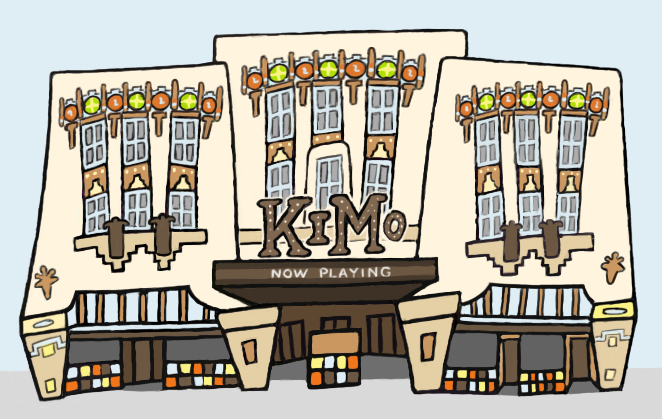RICHARD S. DARGAN | Architecture
|
KiMo Theater
| |||||||
|
Date: 1927 Albuquerque's KiMo Theater is a conspicuous example of the exotic movie palaces that sprung up across the United States in the 1920s. Grauman's Egyptian (1922) in Hollywood is widely considered the progenitor, and Grauman's Chinese (1927), just west of the Egyptian on Hollywood Boulevard, is perhaps the best known. The Kimo belongs to the architectural subgenre known as Pueblo Deco. Beneath the riot of decoration, including terra cotta shields and spindles and wrought aluminum door handles, lies a familiar Art Deco facade: three blockish masses, with the central one slightly set back and windows organized into recessed vertical strips. Other examples of Pueblo Deco architecture include Maisel's Indian Trading Post across the street from the Kimo, and two notable buildings in Phoenix: the Arizona Biltmore Hotel and Luhrs Tower. Kimo architect Carl Boller reportedly studied New Mexico pueblo architecture before submitting sketches for the theater. It's possible that during his travels he saw the El Navajo (1923), a Fred Harvey hotel designed by Mary Colter, in Gallup, N.M. El Navajo (demolished in 1957) shows what the Kimo might look like stripped of its ornamentation. Carl Boller worked with his brother Robert on a number of movie theater commissions during the first three decades of the 20th century. Besides the Kimo, several others remain, including the Landers Theater in Springfield, Missouri (1909), and a couple of Moorish-inspired movie houses: the Electric Theater in Kansas City, Kansas (1922) and the Missouri Theater in St. Joseph, Missouri (1927). |
||||||
